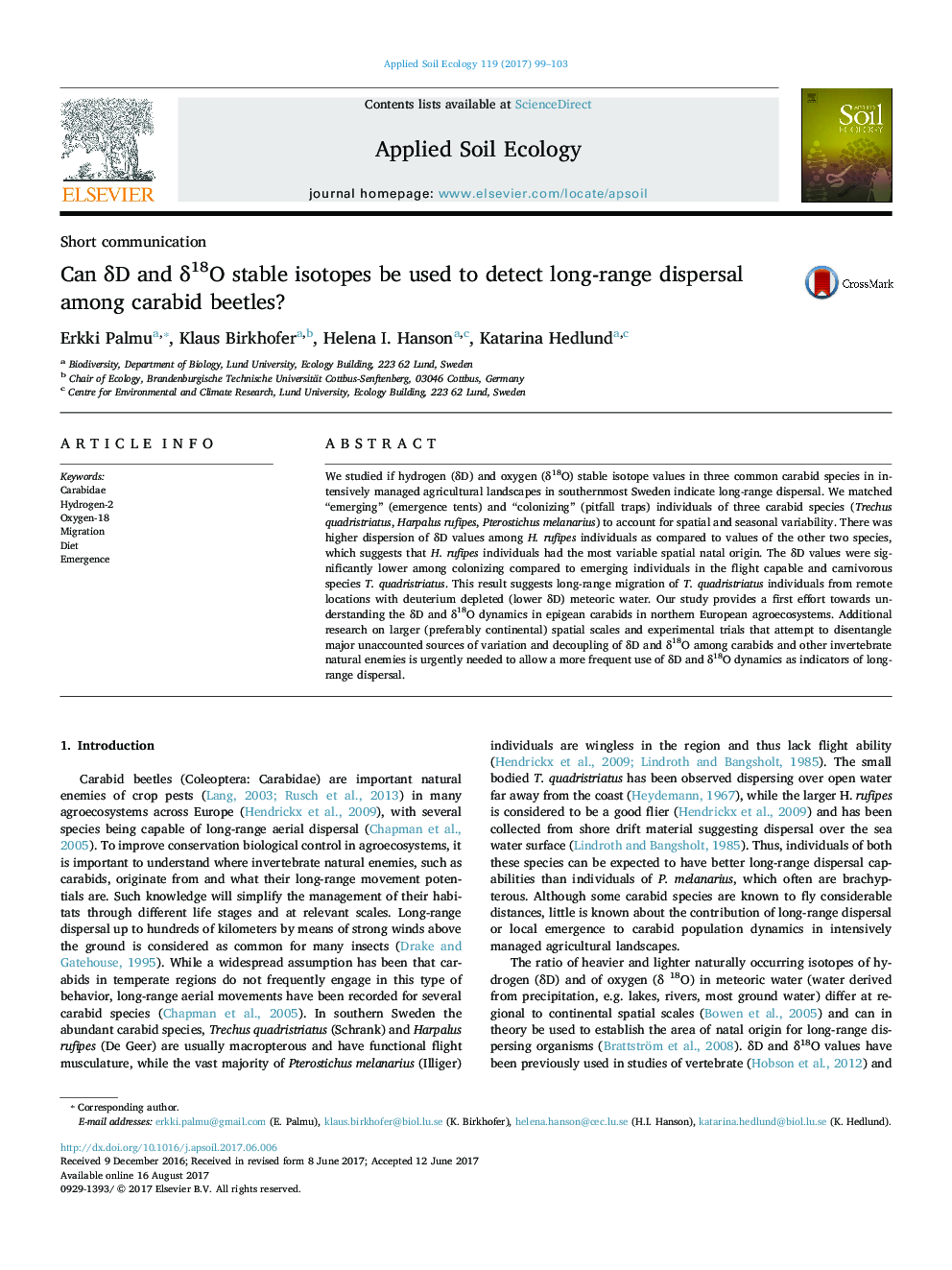| کد مقاله | کد نشریه | سال انتشار | مقاله انگلیسی | نسخه تمام متن |
|---|---|---|---|---|
| 5742601 | 1617765 | 2017 | 5 صفحه PDF | دانلود رایگان |
عنوان انگلیسی مقاله ISI
Can δD and δ18O stable isotopes be used to detect long-range dispersal among carabid beetles?
دانلود مقاله + سفارش ترجمه
دانلود مقاله ISI انگلیسی
رایگان برای ایرانیان
کلمات کلیدی
موضوعات مرتبط
علوم زیستی و بیوفناوری
علوم کشاورزی و بیولوژیک
بوم شناسی، تکامل، رفتار و سامانه شناسی
پیش نمایش صفحه اول مقاله

چکیده انگلیسی
We studied if hydrogen (δD) and oxygen (δ18O) stable isotope values in three common carabid species in intensively managed agricultural landscapes in southernmost Sweden indicate long-range dispersal. We matched “emerging” (emergence tents) and “colonizing” (pitfall traps) individuals of three carabid species (Trechus quadristriatus, Harpalus rufipes, Pterostichus melanarius) to account for spatial and seasonal variability. There was higher dispersion of δD values among H. rufipes individuals as compared to values of the other two species, which suggests that H. rufipes individuals had the most variable spatial natal origin. The δD values were significantly lower among colonizing compared to emerging individuals in the flight capable and carnivorous species T. quadristriatus. This result suggests long-range migration of T. quadristriatus individuals from remote locations with deuterium depleted (lower δD) meteoric water. Our study provides a first effort towards understanding the δD and δ18O dynamics in epigean carabids in northern European agroecosystems. Additional research on larger (preferably continental) spatial scales and experimental trials that attempt to disentangle major unaccounted sources of variation and decoupling of δD and δ18O among carabids and other invertebrate natural enemies is urgently needed to allow a more frequent use of δD and δ18O dynamics as indicators of long-range dispersal.
ناشر
Database: Elsevier - ScienceDirect (ساینس دایرکت)
Journal: Applied Soil Ecology - Volume 119, October 2017, Pages 99-103
Journal: Applied Soil Ecology - Volume 119, October 2017, Pages 99-103
نویسندگان
Erkki Palmu, Klaus Birkhofer, Helena I. Hanson, Katarina Hedlund,